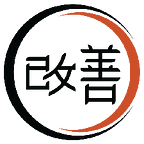Overcoming UX Misdirection
by Darren Hood
How do you define UX? I’ll explain why I’m asking in just a bit. Before we talk about what UX is, let’s consider what it is not:
- Thought of by many to focus only on aesthetics.
It’s not the job of UX professionals to “make things look good.” Our focus is on things like usability, optimal cognition, and ease of use — not “pretty.” And “pretty” can evaporate quickly if the usability, cognitive load, and ease of use are all painful. - UX is not UI.
UX consists of a minimum of 120 methods, methodologies, principles, techniques, deliverables, and artifacts, of which user interface design is one. Contrary to popular belief, the acronyms UX and UI are NOT interchangeable. - UX is not just “one thing.”
As mentioned, UX is made up of a very large hosts of techniques and deliverables. When some people say “UX,” they’re referring to the entire discipline. When others say “UX,” they could be using it interchangeably with UI. If 10 people say UX, unless they take the time to be specific, they could easily mean 10 different things and are, therefore, not saying the same thing. In truth, however, it’s never just one thing. - UX is not design thinking.
Just as someone’s saying “UX” could mean 10 things, the same can be said for design thinking. For some, design thinking is referring to different steps in a project where various UX methods are applied to each step. They just happen to call it UX. These folks, however, are in the gross minority. For many, design thinking is an alternative to UX. Some think it’s the equivalent. The world of design thinking is a hodgepodge that’s not really solving the issues it claimed to address and is, in many cases, detracting from UX maturity levels. In short and on average, UX is not design thinking. - UX is not UX if it does not include insights from actual users.
The “U” in UX stands for “user.” The focus of UX is optimizing the experience for users with a service, solution, or resource. In order to optimize efforts, those responsible for the efforts must work to gain insights from or operate based on user input. Without user input and insight (unless relying on heuristics), the efforts are driven by genius design or guesswork. Basically, if your work does not include input from users, it’s just “X.” Throw out the “U.”
Now that I’ve covered what UX is not, though I’ve addressed it briefly, let’s spend a few moments talking about what UX truly is. Some people feel “UX is a mindset,” but as you can see by the information already presented, that conclusion couldn’t be further from the truth.
Let’s ground ourselves by reviewing a few real world definitions:
- UX refers to the discipline or set of disciplines a UX professional employs to find the “sweet spot” between user goals, business goals, and various types of constraints. ~ Darren Hood
- The science and art of designing a product, a service, or an experience with a brand from end-to-end. ~Susan Weinschenk
- UX design is essentially about enhancing customer satisfaction and loyalty by delivering a positive experience at all of the touchpoints a customer experiences when interacting with a brand or company. ~Toptal
Each of these definitions provides insight about what UX truly is. Now, we said all of the aforementioned to address the issue of what I call “UX misdirection.” As mentioned in my post about “The UX Cycle of Excellence,” the first and foundational step associated with achieving excellence in UX involves properly defining and understanding the discipline. Without properly defining UX, a person is open to the misdirection we’re addressing. When we properly define and understand UX, we become cognitively garrisoned against shortcuts, quick fixes, and topics that would lead us astray.
One of the most common misdirections I’ve witnessed (and the one that triggered my writing this post) involves the tools of the trade. I saw an advertisement for a UX conference sponsored by a company behind one of today’s popular tools. Cool tool. It gets the job done for the most part, but it’s just a tool. The tool isn’t UX and UX isn’t the tool.
As in the past, topics to be covered at such a conference will revolve around ways to use the tool, but won’t really cover what UX is about—understanding requirements, solving design problems, aligning work with user and business goals, and managing relationships—you know, the REAL stuff behind actually creating designs.
Conclusion
If folks aren’t careful, they will (as many have) put the tool before the actual work and/or place inordinate importance on the tool and displace the work. If folks aren’t careful, they’ll think that UX is about “making things pretty” and neglect to learn about the various methods and techniques. If folks aren’t careful, they’ll fail to see the resources that would present scenarios and resources that champion those two mindsets as risky, dangerous, and counterproductive. And when someone fails to see something as risky, dangerous, and counterproductive, they’ll embrace them and produce accordingly.
Don’t allow yourself to be a victim of UX misdirection today. Take the clear path. Yes… it’s clear. In so doing, you’ll overcome UX misdirection and set yourself up for success.
About Darren
Darren Hood is a 26+ year UX practitioner with a broad professional footprint that spans several types of business. He serves as an adjunct professor at Kent State University (Kent, Ohio), Lawrence Tech University (Southfield, Michigan), and Harrisburg University (Harrisburg, Pennsylvania). He is also one of the authors featured in “97 Things Every UX Practitioner Should Know.”
You can hear more from the Darren by checking out the UX Uncensored Medium page or listening to The World of UX with Darren Hood wherever podcasts are available.
